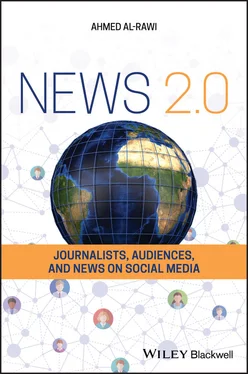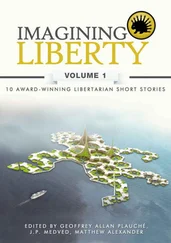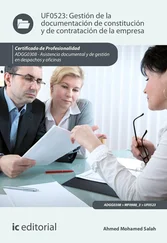1 Cover
2 About the Author About the Author Ahmed Al‐Rawi is Assistant Professor in News, Social Media, and Public Communication at the School of Communication at Simon Fraser University, Canada. He is the Director of the Disinformation Project, which empirically examines fake news discourses in Canada on social media and in mainstream media. His research expertise is related to global communication, news, social media, and the Middle East, with emphasis on critical theory. He has authored three books and over 50 peer‐reviewed book chapters and articles, published in journals like Information, Communication & Society , Online Information Review , Social Science Computer Review , Social Media + Society , Journalism , Journalism Practice , Digital Journalism , International Journal of Communication , International Communication Gazette , and Public Relations Review .
3 Preface Preface This book provides an analytical assessment of recent developments, debates, and research on news, social media, and 2.0 news organizations. The main argument, which is drawn from empirical evidence, is that news production is largely biased, while news consumers are now mostly confined to their filter bubbles despite the widespread proliferation of news on social media. From the news‐consumers side, this often leads to the dissemination of disinformation as well as misinformation, phenomena related to the term “fake news”: a phrase deployed with divergent meanings and intentions. This is an important field of research due to its direct impact on democracy and politics, especially with the increasing popularity of clickbait and the influence of bots on Social Networking Sites (SNS). The book focuses on three main areas, with emphasis on non‐Western media outlets: content (news), audiences or “prosumers” (networked audiences), and producers (news organizations and journalists). Prosumers are not only consumers of news but also producers of data (posts and comments) and metadata (clicks) who exhibit their engagement with news organizations and their news productions in different ways. Chapter 1 provides an introduction to the meaning of News 2.0 and the advent of new technologies that are shaping the way news is produced and packaged, while Chapter 8 discusses mobile news: the future of news consumption. I would like to acknowledge the generous assistance of Simon Fraser University's Rapid Response Fund, which provided the financial means to cover the costs of the copy editor. I would also like to thank Derrick O'Keefe, a graduate student at SFU, for his editorial assistance. Finally, versions of most of this book's materials have been previously published as journal articles, as indicated in each relevant chapter. What motivated me to produce this book is the thematic nature of the previous studies that I conducted using, primarily, computational journalism methods and cross‐national comparative research with emphasis on news values theory. This combination of quantitative and qualitative analysis, with a focus on media produced and consumed outside of Europe and North America, remains all too rare. It is my hope that this humble contribution will encourage other researchers, especially from the global south, to pursue similar projects in the study of international news flows and journalism. Finally, this book is dedicated to my mother as a way to express my gratitude for her love, generosity, and tremendous sacrifices.
4 1 News 2.0 and New Technologies References
5 Part I: Content 2 Social Networking Sites and NewsIntroduction News Values and Social Media News Researching News on Facebook and Twitter Facebook News Analysis Twitter News Analysis Conclusion References 3 Fake News Discourses on SNS vs. MSMIntroduction Fake News on Social Media Networked Gatekeeping References
6 Part II: Audiences 4 Social Media News AudiencesIntroduction Selective Exposure on Social Media Radio News Analysis TV News Analysis References 5 Viral News on Social MediaIntroduction What Is Viral Content? Emotions and Virality Viral News and Newsworthiness YouTube and Twitter News Analysis Facebook News Analysis References
7 Part III: Producers 6 Celebrity Journalists 2.0 and BrandingIntroduction Celebrity Journalists Journalists and Social Media Use References 7 Who Is Breaking News on Social Media?Introduction What Is Breaking News? Metajournalistic Discourses and Breaking News References
8 Part IV: Mobile News 8 Mobile News Apps as Ethnic MediascapesIntroduction Theoretical Framework Mobile News Apps as Cultural Sites Non‐English Mobile News Apps Conclusion References
9 Index
10 End User License Agreement
1 Chapter 1 Table 1.1 Facebook news pages and frequency of total reactions.
2 Chapter 2 Table 2.1 Frequency of references (and average percentages) to countries by t... Table 2.2 Frequency of references (and average percentages) to political acto... Table 2.3 Number of news stories and retweets by the 12 news organizations. Table 2.4 Frequency of references (and average percentages) to countries on d...Table 2.5 Frequency of references (and average percentages) to political acto...Table 2.6 Total frequency and percentage of the top 10 most referenced figure...Table 2.7 Total frequency and percentage of the top 10 most referenced countr...
3 Chapter 3Table 3.1 US and British MSM coverage of fake news.Table 3.2 Topic clustering in MSM.Table 3.3 Top 50 most recurrent words in MSM.Table 3.4 Top 50 phrases (two to three words) in MSM.Table 3.5 Topic clustering on Twitter.Table 3.6 Top 50 most recurrent phrases (two to five words) on Twitter.Table 3.7 Top 50 most recurrent words on Twitter.
4 Chapter 4Table 4.1 Number of page likes and news story comments on the two TV channels...Table 4.2 Most recurrent words used by the audience of Radio Monte Carlo's Fa...Table 4.3 Most recurrent phrases used by the audience of Radio Monte Carlo's ...Table 4.4 Most recurrent words used by the audience of RNW's Facebook page.Table 4.5 Most recurrent phrases used by the audience of RNW's Facebook page.Table 4.6 Top 20 most liked posts on RNW's Facebook page.Table 4.7 Top 20 most liked posts on Radio Monte Carlo's Facebook page.Table 4.8 Top 20 most frequent words in the comments on Al Jazeera's Facebook...Table 4.9 Most frequent comment phrases on Al Jazeera's Facebook page.Table 4.10 Top 20 most frequent words in the comments on Al Arabiya's Faceboo...Table 4.11 Most frequent comment phrases on Al Arabiya's Facebook page.Table 4.12 News topic distribution for the top 100 most commented‐on news sto...Table 4.13 Most commented‐on countries in news topics.
5 Chapter 5Table 5.1 News stories on YouTube and Twitter.Table 5.2 Number of page and news story likes and comments along the 10 news ...Table 5.3 News topic distribution along the 10 news organizations.Table 5.4 Viral news on the four newspapers' Twitter accounts.Table 5.5 Viral news on the four newspapers' YouTube channels.Table 5.6 Ranking of news stories on YouTube and Twitter.Table 5.7 Average results on YouTube and Twitter in sequence.Table 5.8 Most liked news topic distribution along the 10 news organizations.Table 5.9 Most commented‐on news topic distribution along the 10 news organiz...Table 5.10 Ranking of news stories.Table 5.11 References to specific countries in local order, politics, and spo...Table 5.12 References to specific countries in local order, politics, and spo...Table 5.13 Total number of Facebook users by country for the 10 news organiza...
6 Chapter 6Table 6.1 Statistics on the journalists' Twitter accounts.Table 6.2 Statistics on the journalists' Facebook pages.Table 6.3 Categories of journalists' posts on Twitter.Table 6.4 Categories of journalists' posts on Facebook.Table 6.5 Geographical locations of journalists' social media followers.
Читать дальше












